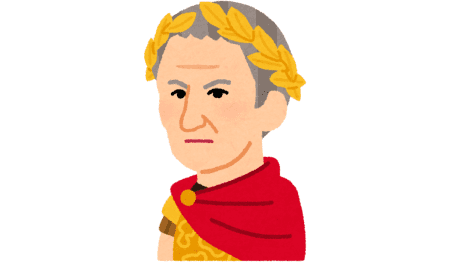
March 1st, Roman Party!
Salve, revelers! Get ready to step into the sandals of ancient Romans as we transport ourselves to the Kalends of March sometime around the mid-8th century BCE. The Kalends of March? Yes, that’s how the Romans called the beginning of each month. Alright, time-travelers: Happy New Year’s in March then; but back in a Roman Party!
It’s time to honor the traditions of the Eternal City and celebrate the beginning of the Roman year in style. Join us for a night of feasting, merriment, and toasting to Romulus, the legendary founder of Rome. Don your tunics and togas, and let the festivities begin!

Romulus & his Lunar Love
In the ancient Roman calendar, March, the month that marked the beginning of spring, held special significance associated with the renewal of life and the agricultural cycle. As the moon danced through the night sky, so did the Romans, celebrating the New Year in March. Lunar love was in the air! Let’s continue saying: Happy New Year’s in March!
Romulus, the OG party planner, made March the superstar month, and we’re here to revel in the spirit of those moonlit calendar escapades! Back in the day, March was the cool kid on the block, all thanks to Romulus and his moonlit calendar escapades.

A Shorter Year
Back in Romulus’ day, their calendar was like the Lite version, you know? Ten months, 304 days—no January or February in the mix. Just like drinking Coors lite so you don’t get that drunk during a 365-day year.
It was like they had this playlist of months, and Romulus was the DJ, spinning tracks like March and April. The whole calendar scene was a bit more laid-back compared to the calendar remix we’re rocking today. These months were:
| Month | Day | Month | Day |
|---|---|---|---|
| Martius | 31 days | Sextilis | 30 days |
| Aprilis | 30 days | September | 30 days |
| Maius | 31 days | October | 31 days |
| Junius | 30 days | November | 30 days |
| Quintilis | 31 days | December | 30 days |

After this calendar, they tried different systems until the Numa Pompilus arrival.
Numa Said No More!
Numa Pompilius, the second big shot in ancient Rome, shook things up big time around 713–673 BCE. This nythical king was Rome’s remix master. Numa went full-on rebel and decided, “No more of this shitty 304-day jazz!” It was like he slammed the door on a party that was missing a few key guests.
So, Numa scratched the idea of having January and February play extra tracks, and he said, “Let’s aim for a solid 355-day bash.” Imagine he was the host, desperately trying to round up enough snacks for everyone at the last minute.

Numa’s calendar
Numa’s calendar was evolving, a bit like upgrading your phone to get all the latest features. He was dialing it in, trying to sync up with the sun and get those seasons dancing in harmony. No more missing pieces – it was time to rock the full calendar experience! Picture this:
January: Numa decided to kick off the Roman year with January. It was like the grand opener, all dedicated to Janus, the dude with two faces—one looking forward, the other looking back. Perfect vibe for a fresh start, huh?
February: Then, he threw in February right after January. They say the name comes from some Latin word, ‘februa,’ tied to purification rituals. So, it was all about getting clean and prepping for the farming grind ahead.
These changes made the Roman calendar a bit more like the one we’ve got now, syncing up with the solar year and making more sense with the seasons.
Numa was basically Rome’s calendar guru, giving it a makeover and getting things in sync with nature. Not too shabby, right?

Numa’s Changes!
Alright, check it out now! Numa Pompilius did some major DIY on the Roman calendar, and his version was like having 355 days in the calendar mix. It was a bit like trying to squeeze all your favorite songs into a mixtape but realizing you’re a few tracks short.
So, imagine this calendar as Numa’s playlist. He adds January and February, sprinkling in some fresh beats.
No perfect harmony yet!
But here’s the kicker – it’s still not the full 365-day festival. It’s like hosting a mega party but realizing you missed a few friends on the invite list.
Numa was like Rome’s DJ, dropping tunes to sync up with the sun and seasons. His calendar was a work in progress, not quite hitting the perfect harmony yet.
It was like trying to make the ultimate pizza but realizing you’re short on toppings. The quest for the perfect calendar continued!

Let’s Recap: ¡Ave César!
We started with Romulus, the original vibe-setter, throwing down a calendar that was like the exclusive hangout spot—a bit niche, with March stealing the show, and a lunar love atmosphere all around.
Then, Numa Pompilius, Rome’s remix king, steps in to add January and February, turning the calendar into a more versatile playlist. But, there’s a catch—it’s like hosting the ultimate party but realizing you’re missing a few must-have tracks.

Caesar Nailed it!
Enter Julius Caesar, the calendar magician. Around 45 BCE, he drops the Julian calendar, a total game-changer. Picture it as going from a cool indie gig to a massive music festival—syncing up with the sun, the seasons, and finally giving us that sweet 365-day groove we know today, including a Leap Day. And that, my friends, is how Rome’s calendar journey went from a chill hangout to a full-blown calendar sensation!

Romans New Year’s Rituals!
So, Romans had their New Year rituals, but it wasn’t the glittery bash we know. It was more of a low-key shift from one month to another, a dash of celebration for good measure. The Romans did observe the beginning of the New Year, and their calendar underwent changes over time that influenced how this celebration was conducted. However, it didn’t mean they will go all crazy–like us–telling everyne: Happy New Year’s in March!
As mentioned, in the early Roman calendar, they kicked off the New Year shenanigans around March 1st, throwing a modest celebration known as the Kalends of March. It was probably more of a “Hey, it’s a new year, let’s acknowledge it with a nod and a wink” kind of vibe—nothing like the fireworks and glitter we’re used to today.

New Years’ Parties Still in March?
All cool with Caesar’s Calendar and his Leap Year, right? But here’s the kicker, folks: not everyone hopped on the Julian Calendar bandwagon. Picture this – for centuries, people across the map kept marching to their own calendar beats. It was like a global dance party, but everyone had their unique rhythm.
Fast forward to the grand entrance of the Gregorian Calendar. In 1582, Pope Gregory XIII rolled out the ultimate calendar glow-up. It was like the remix of all remixes. The Gregorian Calendar fine-tuned things even more, syncing up with the solar year like a dance crew hitting every move in perfect harmony.
So, after ages of celebrating New Year’s at different times, the Gregorian Calendar became the global headliner. It’s the calendar we’re grooving with today, making sure the world parties in sync. And that, my friends, is how we went from Romulus’ lunar love to a global countdown on January 1st. Time’s a wild ride, isn’t it?

Marchers Missed the Memo
So here we are, partying it up on January 1st, thanks to Romulus’ lunar musings, Caesar’s calendar craziness, and Pope Gregory’s precision magic.
The next time someone raises an eyebrow at our winter celebrations, just blame it on Romulus, toast to Caesar’s audacity, and give a nod to Gregory for turning our calendar quirks into a worldwide bash.
March may have missed the memo, but January is where the party’s at! Both, Caesar and Gregory, came out with the idea of leaping a day to sync with the cosmos to later determine that some years may also be leaped. And that’s what happened!

Why So Much Chaos?
Now, you might be wondering, “Why this calendar chaos?” Why it took too long for the Gregorian calendar to be widely accepted and put in place. Well, my friends, it turns out people love a good tradition and also it took centuries for humanity to understand some of the mysteries of our cosmos.
Some cultures stuck to their New Year’s guns, clinging to ancient customs, religious vibes, or lunar lovin’. Changing the calendar felt a bit like trying to get your grandpa to ditch his flip phone for the latest iPhone – not an easy sell.
Even past the Middle Ages, people celebrated New Year’s at the end of March in tune with the beginning of spring. That’s a possible explanation for what later became April Fools’—we’ll discuss it in a future article.

Leap Year’s Sexy Origins
Continue checking out our blog to find out more about Leap Year and how it all started with Julius Caesar and his Roman Parties. Talking about Roman Parties, check out our sagas Things Spanish People Say in the Bedroom and El Sexi Chupacabras to learn dirty and sexy phrases in Spanish.

Legends & Laughs
Check out our saga “Legends & Folktales” to discover creepy and eerie traditional Spanish stories. If you wanna know what mistakes not to make when learning Spanish, read our blog section: “Language Bloopers.”

Free Spanish Lessons
For March’s New Year, Kasa de Franko is offering free Spanish classes. At Kasa De Franko, A Fun Spanish School, we will discuss this and many other topics—of course in Spanish.
You don’t know Spanish yet? That’s ok. You can start by clicking on the red button to book your lesson today. Happy New Year’s in March, again! And always remember…

